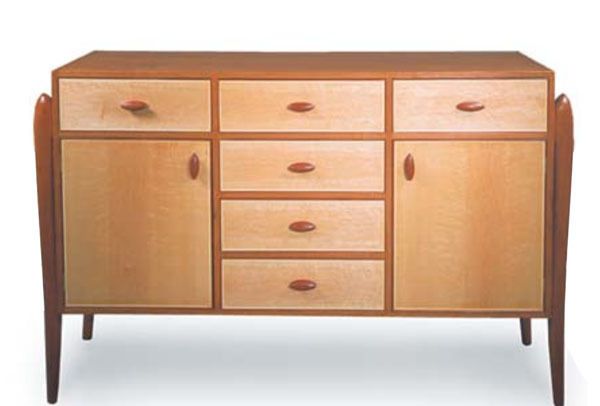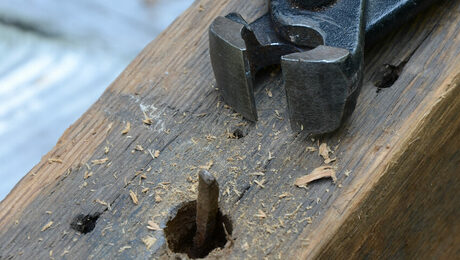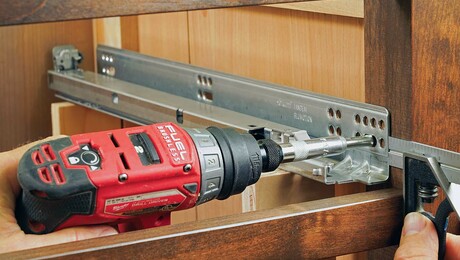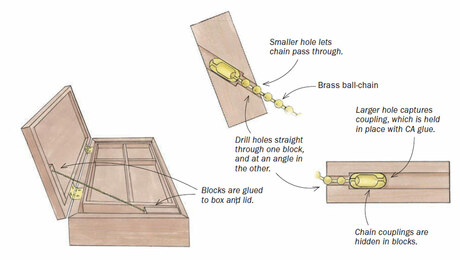Wood Pulls Tailored to Fit
Shop-built knobs and pulls can dress up your cabinets better than most store-bought versions
Synopsis: Pulls offer an opportunity to merge design and function. This article discusses how to select wood for the pulls, using modeling clay to test out your design, how to carve them by hand and machine, and where to best place them on the furniture piece you’re using them on. The author offers several methods for attaching the pulls to the furniture.
Door and drawer pulls serve two major functions. On the obviously practical side, they provide a handhold to open doors and drawers. But in a less tangible realm, they also complement the finished furniture with an important visual detail. I often incorporate wood pulls in my furniture as a focal point and as a means to harmonize the overall design. I like to use dense tropical hardwoods because they make a more durable pull, allow me to shape fine details and exhibit exotic colors and grain patterns.
Design and function are related
I learned the hard way that it’s important to consider the aesthetics of pulls early in the design process, to avoid ending up with pulls that don’t appear as a unifying element in the overall design of the furniture. I often attempt to shape pulls so that they’ll be comfortable to open in more than one hand position, because not all people prefer the same technique. Before designing any pulls, you might find it helpful to observe people opening a variety of doors and drawers to get a better idea of how different pulls work. Whatever the final shape you end up with, it should complement the shape of the furniture.
While turned pulls are perhaps the easiest to make, I use them only when the design calls for a simple look or when a customer specifically requests a turned pull. Commercially available pulls are usually too heavy-looking for my tastes, so I turn my own using one of the tropical hardwoods (such as ebony or rosewood), most of which polish beautifully. One trick that I use to polish turned knobs, which would work equally well on store-bought pulls, is to chuck the tenon end into the drill press set at its highest speed and sand the knob with very fine sandpaper.
For an unobstructed or flush front on a piece of furniture, you may want to consider a concealed pull. In such cases, I will often notch the dividers between drawers and cut a slight finger recess into the inside bottom edge of the drawer front. The shape and size of the notch in the divider can add its own visual interest to the overall design.
Other design decisions to be made involve color and size. Do you want a color contrast that makes the pulls stand out or a similar tone to blend in with your doors and drawer fronts? And the size, like the shape of the pull, should be proportional to the piece of furniture.
From Fine Woodworking #150
For the full article, download the PDF below:
Fine Woodworking Recommended Products

Festool DF 500 Q-Set Domino Joiner

Starrett 12-in. combination square

Dubuque Clamp Works Bar Clamps - 4 pack





















Log in or create an account to post a comment.
Sign up Log in